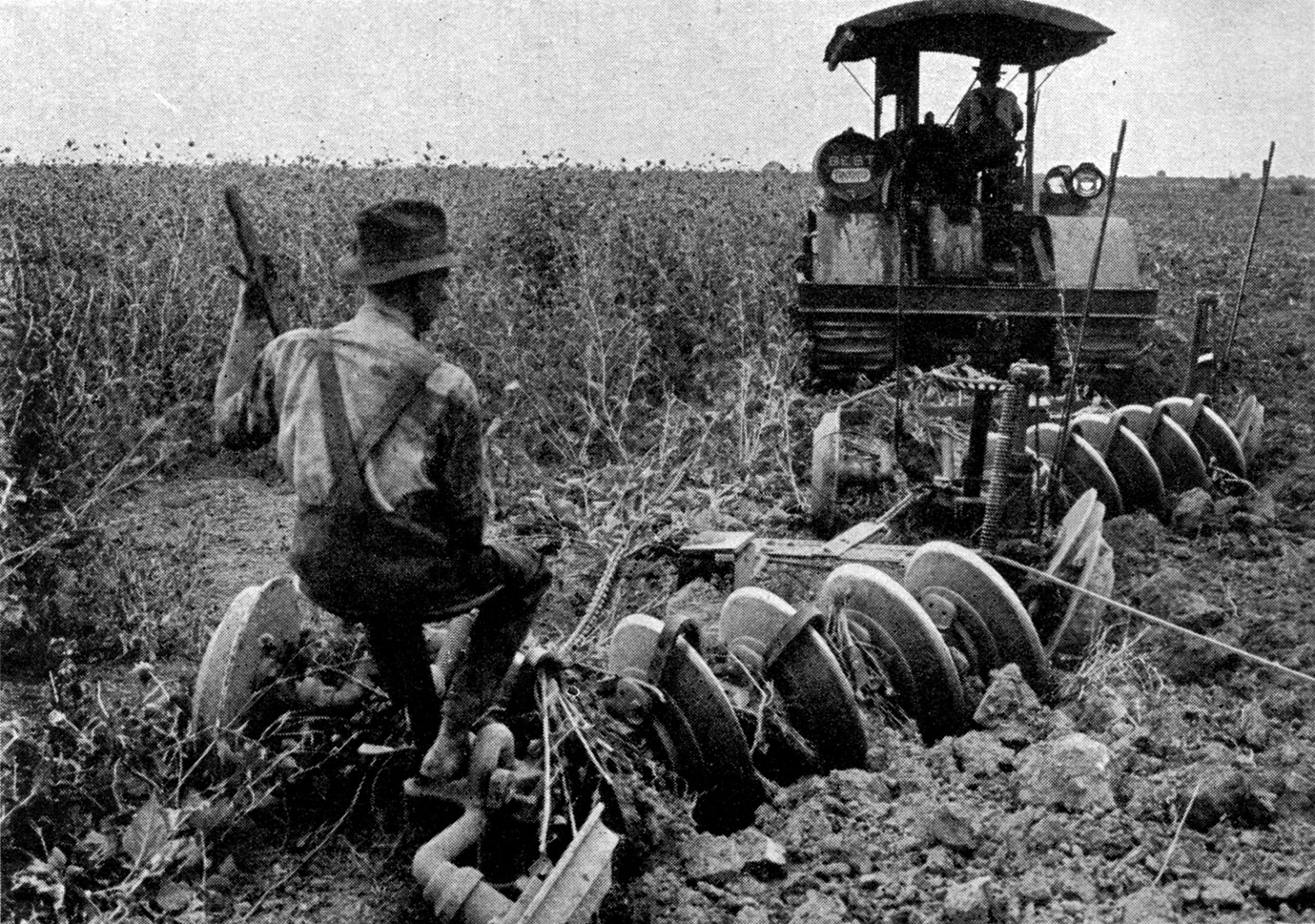 The New Yorker has a pretty incredible article on the history of American agriculture. It describes how the U.S. was transformed from a land of unskilled subsistence farmers to an agricultural (and political) superpower - largely thanks to a network of government scientists and extension agents.
The New Yorker has a pretty incredible article on the history of American agriculture. It describes how the U.S. was transformed from a land of unskilled subsistence farmers to an agricultural (and political) superpower - largely thanks to a network of government scientists and extension agents. In 1900, poor agricultural practices exhausted and destroyed most farm plots in fewer than 5 years and the typical family spent more than 40% of their income on food. Agriculture was built on an unproductive combination of tradition, superstition and hard labor. Most farmers were incredibly recalcitrant to new ideas, which were often derided as "book farming." As the food cost crises intensified, the U.S. government stepped in - not with an Agricultural Central Planning Agency, but with a distributed network of experimental and demonstration farms in small towns across the continent. USDA scientists and extension agents at these stations worked personally with local farmers to develop and communicate best practices for their crops in their region.
In 1900, poor agricultural practices exhausted and destroyed most farm plots in fewer than 5 years and the typical family spent more than 40% of their income on food. Agriculture was built on an unproductive combination of tradition, superstition and hard labor. Most farmers were incredibly recalcitrant to new ideas, which were often derided as "book farming." As the food cost crises intensified, the U.S. government stepped in - not with an Agricultural Central Planning Agency, but with a distributed network of experimental and demonstration farms in small towns across the continent. USDA scientists and extension agents at these stations worked personally with local farmers to develop and communicate best practices for their crops in their region."What seemed like a hodgepodge eventually cohered into a whole. The government never took over agriculture, but the government didn’t leave it alone, either. It shaped a feedback loop of experiment and learning and encouragement for farmers across the country. The results were beyond what anyone could have imagined. Productivity went way up, outpacing that of other Western countries. Prices fell by half. By 1930, food absorbed just twenty-four per cent of family spending and twenty per cent of the workforce. Today, food accounts for just eight per cent of household income and two per cent of the labor force. It is produced on no more land than was devoted to it a century ago, and with far greater variety and abundance than ever before in history."According to this article, the current Senate health care bill is following in these footsteps to tackle our current crisis of out of control costs. Despite all the hype about whether or not this bill will have a public option or cover abortion, the core of this bill is apparently dedicated to giving organizations and communities across the country the freedom to experiment with how they will administer and pay for health care. It would harnesses both the creativity and ingenuity of individuals to develop new systems and the government's ability to organize and communicate the results.
This American Life came to the same conclusion after a fascinating tale of the history of U.S. health insurance. I sure hope it works!
* Although both pictures look "old," the first (1921) shows the adoption of very efficient (though capital-intensive) mechanization over human and animal labor (1886).

Cool read about the beginnings of the extension service - I was informed about the Hatch act and smith-lever funds, but not to this detail. Makes one proud to be an extension agent (even though we are currently disappearing faster than we are hired!)
ReplyDelete